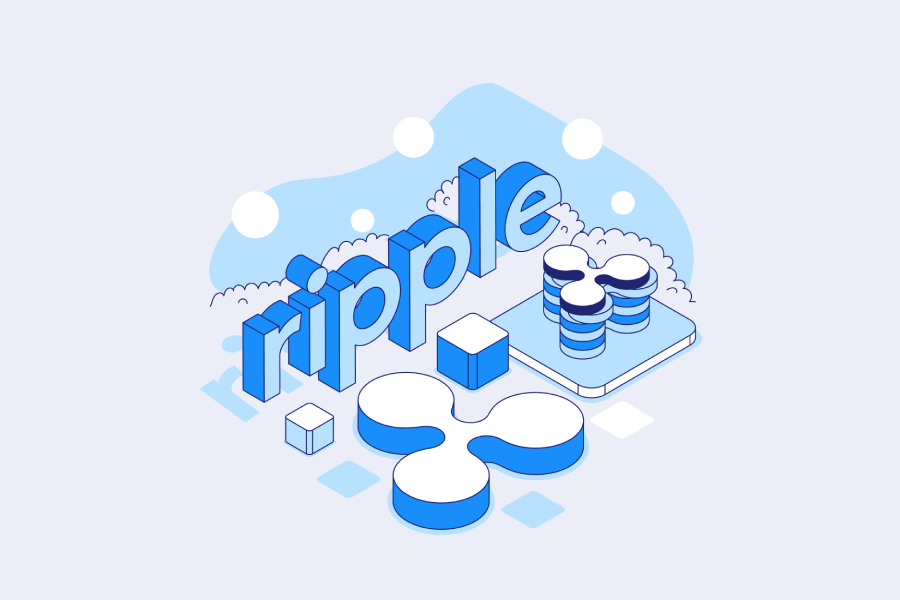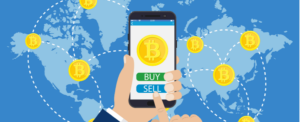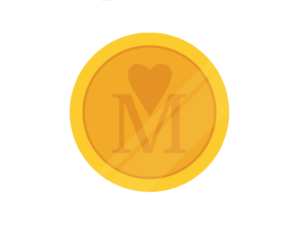What is Ripple (XRP)? If you’re new to cryptocurrency the answer may surprise you… because it is not a cryptocurrency. While it originally referred to both the name of a coin and the platform on which it was based, today “Ripple” refers only to the platform—to either the RippleNet payment protocol or the company behind it, Ripple Labs Incorporated. The currency itself is now known as XRP, but even more surprising is that it’s not exactly a cryptocurrency either. Rather, it’s defined on the official site as a “digital asset for payments.”
So, what is Ripple? For starters, it’s the payment network on which XRP is based. This technology is best described as a global distributed and permissioned transactional infrastructure, which allows for very rapid and low-cost transactions, at the cost of some centralization.
It has been designed for three major applications:
Real-time settlement between major institutions, such as corporations and (central) banks,
Remittance between companies and individuals in different countries,
Currency trading outside of traditional Forex markets.
RippleNet supports 3 major products at present:
xCurrent, which processes payments for banks and financial services companies.
xVia, used for remittance, or sending payments between banks in different countries.
xRapid, used to source liquidity between payment providers using XRP.
XRP vs Other Cryptocurrencies
An important difference between Ripple and most other cryptocurrencies is that it doesn’t use either Proof of Work (which is to say, mining, whereby anyone can create new currency at a set rate and in proportion to their mining power) or Proof of Stake (which is a system in which anyone can create new currency at a set rate and in proportion to their crypto holdings). Instead, Ripple uses a distributed agreement protocol to validate its ledger. In this system, double-spending (or fraudulent transactions, in non-technical terms) is prevented by the consensus of a majority of trusted validators.
It’s a setup that is far more efficient than found in regular cryptos. Ripple’s platform is extremely rapid and requires hardly any electrical expenditure to maintain, unlike Bitcoin which consumes inordinate amounts of power. However, that comes at an expense: it is much more centralized than other cryptocurrencies and thus requires faith that the majority of validators will stay honest. In the past, validators demonstrated control over the ledger by freezing the XRP sales of former CEO, Jed McCaleb. This makes it similar to the banking system, which can freeze or seize user accounts. While the degree to which Ripple is (de)centralized is a contentious issue, the fact that Ripple Labs owned in excess of 55% of all XRP (which it publically agreed to release at a rate of 1 billion XRP per month via an escrow content), means that the company holds major – albeit diminishing – power over price.
One more important difference between XRP and cryptocurrency is in the former’s approach to the conventional banking establishment. Whereas most cryptocurrencies create an entirely separate monetary system which could potentially replace fiat currency and the entire banking industry if it proves ultimately successful, Ripple takes a more cooperative approach. Indeed, much of its value proposition lies in it being adopted by banks as a payment network and settlement infrastructure, and to this end, it has already partnered with many major banks.
If you’ve ever sent money internationally via bank wire, perhaps using the SWIFT system, you’ll have an idea why it might make sense to buy XRP or to use it over xRapid. Whereas sending money through banks is slow and expensive, Ripple can move funds between banks rapidly, cheaply, and reliably.
Ripple’s History
Ripple was launched as open-source software in 2012, making it the second-oldest major altcoin after Litecoin (LTC). The Ripple protocol was designed by Jed McCaleb and it incorporated elements of an earlier payment system designed by Ryan Fugger, known as OpenCoin. McCaleb was the creator of the infamous Mt. Gox exchange, which he sold to Mark Karpeles in 2011. After leaving the company, McCaleb co-founded Stellar (XLM), which bears many similarities to XRP.
Ripple was coded by Arthur Britto and David Schwartz, who remains as Chief Technical Officer and Chief Cryptographer. The current CEO is Brad Garlinghouse, who also led AOL and Yahoo! in the past. Garlinghouse joined up in April of 2015 and has been instrumental in establishing numerous corporate partnerships between Ripple and various banks, money transmitters, and corporations.
The current list of Ripple’s 157 partnerships and implementations, as well as XRP network and price stats, can be found at Rppl.info. On the 17th of July 2019, the company announced a new partnership with major money transmitter, MoneyGram, which will now use XRP over xRapid for remittance and Forex purposes. Ripple also took a $50 million stake in the company, which in 2014 was the second-largest money transfer company in the world.
The Ripple Price
The Ripple price (or XRP price as it may be) has largely held a range below $1, apart from a massive spike during late 2018 crypto-mania, which took the price to its all-time high of $3.31.
The weekly XRP / Ripple price from December 2016 to late July of 2019,
note the spike caused by people scrambling to buy XRP. Chart courtesy of Trading View.
When considering the Ripple price, it’s good to keep in mind the asset’s distribution. A total of 100 billion XRP was created in 2012, about 50 billion of which is held by Ripple Labs in the aforementioned escrow account which releases 1 billion monthly. The current circulating supply of XRP is estimated at 42 billion. It’s further estimated that 91.46 billion XRP is held by the top 59 accounts, which include those of former and current CEOs and developers.
Ripple has attained the status of second in value only to Bitcoin several times throughout its history. It was most recently in second place during late 2018, before being flipped for second by Ethereum (ETH). Surprisingly, the price displayed little reaction to the MoneyGram news, despite the fact that the service will employ XRP for value transmission.
It would, therefore, appear that XRP is in a neutral phase currently. It would make sense to buy XRP if your market view is that altcoins will outperform Bitcoin in future, and that Ripple is uniquely-positioned to gain widespread adoption through its integration with the traditional banking and monetary transmission system.
Enlightening Queries: Unraveling the Essence of Ripple (XRP)
1. How does Ripple’s transaction validation process differ from traditional cryptocurrencies like Bitcoin?
Ripple doesn’t rely on Proof of Work or Proof of Stake but uses a distributed agreement protocol, where transactions are validated by a consensus of trusted validators. This approach is more efficient and less energy-intensive than Bitcoin’s mining process, although it introduces a degree of centralization.
2. What sets XRP apart from other digital assets in terms of its relationship with banks?
XRP is designed to cooperate with banks, not replace them. Its value lies in its potential adoption by financial institutions for fast, cost-effective international transactions, contrasting with many cryptocurrencies that aim to circumvent traditional banking systems.
3. Why might someone choose to invest in XRP?
Investing in XRP could be wise if you believe that altcoins will surpass Bitcoin in the future and that Ripple’s partnerships with banks will lead to broad adoption and integration into the global financial system, potentially increasing XRP’s value.



